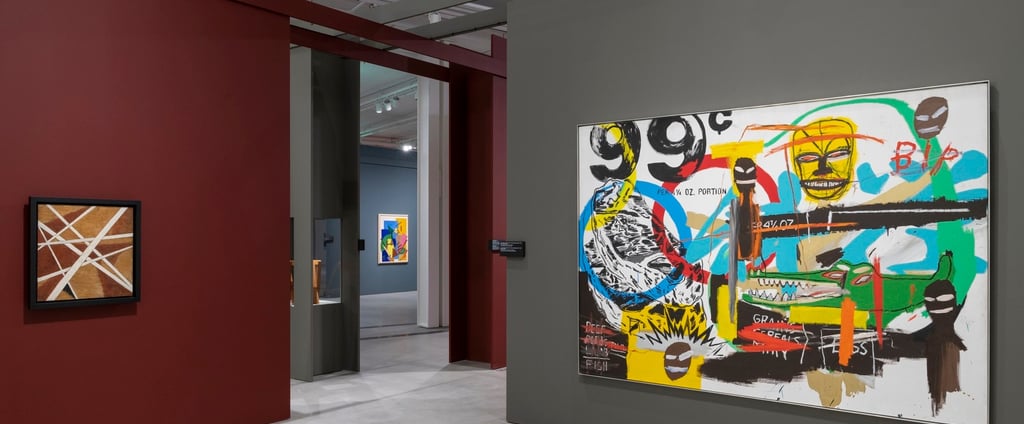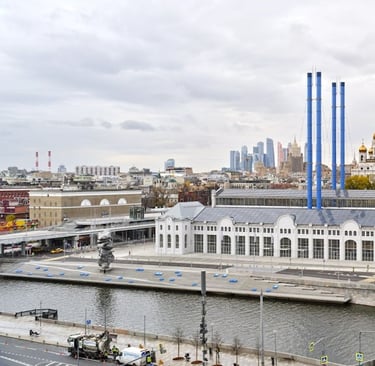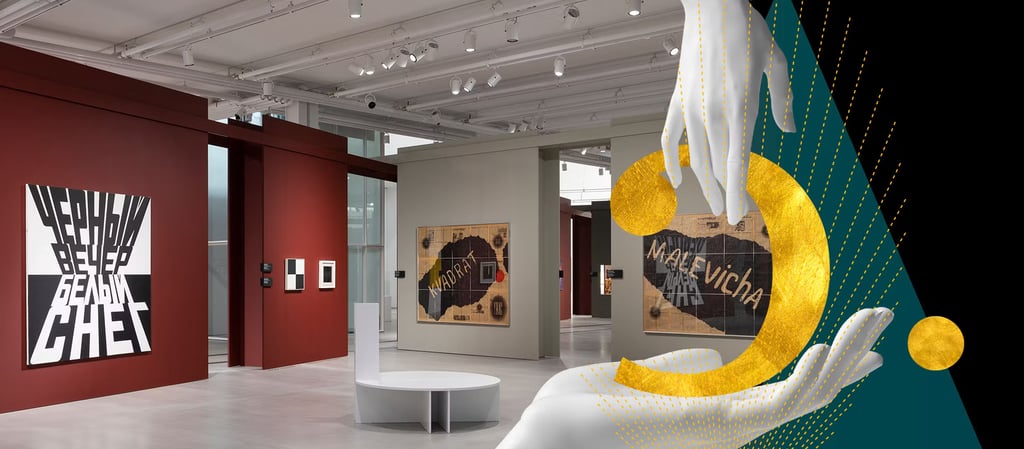Dom Kultury GES-2: Moscow’s Cathedral of Contemporary Culture
Once a Soviet power station, now a cultural landmark, GES-2 fuses contemporary art, performance, and public life in the heart of Moscow.


Where Power Meets Imagination
In the heart of Moscow, within sight of the Kremlin’s red walls and the domes of ancient cathedrals, a different kind of monument now rises — one not to faith or empire, but to the restless spirit of art and imagination.
This is Dom Kultury GES-2, an astonishing transformation of a Soviet-era power station into a cathedral of contemporary culture.
Here, amid vast halls once filled with the hum of turbines, visitors encounter a new kind of energy — that of artists, performers, thinkers, and citizens, all engaged in the collective project of rethinking what a cultural space can be in the 21st century.
From Power Station to Cultural Landmark
The story of GES-2 is a story of radical transformation.
Built between 1904 and 1908, the GES-2 power station was one of Moscow’s first major power plants, supplying electricity to the expanding city and its iconic streetlamps along Tverskaya Street. Designed in a restrained industrial Art Nouveau style, its brick facades and arched windows embodied the optimism of a modernizing Russia.
After decades of service and subsequent decline, the building faced an uncertain future — until it was acquired by the VAC Foundation, founded by collector and philanthropist Leonid Mikhelson.
Under the visionary leadership of Renzo Piano Building Workshop, the power station underwent a stunning metamorphosis. Rather than erasing its industrial past, the renovation embraced it — exposing original structures, weaving new materials into old, and opening the space to light, air, and public life.
In 2021, GES-2 reopened as Dom Kultury GES-2: not a conventional museum, but a vibrant platform for contemporary art, performance, learning, and civic engagement.
A Living House of Culture
True to its name — Dom Kultury, or "House of Culture" — GES-2 is not a temple of high art, but a space where art and life meet.
The building is structured as a kind of cultural village, with spaces that flow organically into one another:
The visitor enters through a vast glass atrium, its soaring roof supported by the original steel trusses of the power station. From there, one moves into flexible exhibition halls, where installations, sculpture, and multimedia works unfold across open spaces.
At the heart of GES-2 is the idea of encounter. This is not a museum to be viewed in reverent silence, but a place to linger, converse, participate. Performances and concerts take place alongside visual art; workshops invite public involvement; debates and lectures animate the house with intellectual energy.
GES-2 is a place where the boundaries between artist and audience, high and popular culture, local and global, are continually questioned and reimagined.
An Ecosystem of Creativity
One of the defining features of Dom Kultury GES-2 is its role as an ecosystem — a cultural space in constant motion.
At any given time, visitors may encounter:
Major contemporary art exhibitions, often curated in collaboration with international partners.
New commissions from Russian and global artists, many responding to the building and its layered histories.
Residency programs, where artists, writers, and musicians develop new work in situ.
Film screenings in the dedicated cinema hall, with a focus on innovative and socially engaged cinema.
Concerts spanning experimental, classical, electronic, and popular forms.
Workshops and public programs, fostering hands-on engagement with creative practices.
This richness of programming is made possible by GES-2’s scale and flexibility — and by its commitment to openness, experimentation, and dialogue.
Practical Information
Location
Dom Kultury GES-2
Bolotnaya Naberezhnaya, 15, Bldg. 1
Moscow, Russia
The center is located on Bolotnaya Embankment, across the river from the Kremlin and a short walk from Red Square and Zaryadye Park.
Opening Hours
Tuesday to Sunday: 12:00 – 22:00
Closed on Mondays.
Opening times may vary during special events and installations.
Admission
Free for general entry and many exhibitions.
Some performances, screenings, and special programs may require ticketed entry (available online and on site).
Getting There
Metro: Nearest stations include Kropotkinskaya, Polyanka, and Tretyakovskaya.
Public transport and pedestrian access are excellent; the center is within easy walking distance of key Moscow landmarks.
Facilities and Services
Multiple exhibition spaces, with rotating programs of contemporary art.
Residency studios and spaces for public engagement with resident artists.
Performance hall for concerts, theater, and interdisciplinary events.
Cinema hall for film programs.
Library and reading areas with materials on contemporary art, culture, and theory.
Bookstore featuring art publications, catalogues, and related literature.
Café and restaurant with indoor and outdoor seating.
Accessible design throughout the building, with accommodations for visitors with limited mobility.
Regular guided tours available in Russian and English.
Contact and Website
Official website: https://ges-2.ru
Here you’ll find full information on current and upcoming programs, event calendars, ticketing for special events, and accessibility services.


A Place for Everyone
Perhaps the most radical aspect of Dom Kultury GES-2 is its ethos of accessibility.
From its inception, GES-2 was conceived not as a rarified institution for the cultural elite, but as a house for all Muscovites — and for visitors from around the world.
Admission to the building is free, and visitors are encouraged to wander, explore, and spend time within its spaces. The architecture fosters this openness: transparent walls, wide corridors, and public terraces invite a sense of belonging rather than exclusion.
Families with children, students, tourists, artists, pensioners — all are welcome here, and all find spaces suited to their interests: from quiet reading corners to bustling performance venues, from hands-on workshops to expansive galleries.
In a city often marked by sharp social and economic divides, GES-2 offers a rare space of civic inclusivity, where culture becomes a shared resource rather than a luxury.
Art in Dialogue with History
GES-2’s programming embraces the complexities of its own site and context.
The building’s industrial past is not erased but made visible — through preserved machinery, architectural traces, and interpretive materials that invite reflection on the histories of energy, labor, and modernization in Moscow.
Many exhibitions and commissions engage directly with these histories, exploring themes of power, transformation, memory, and urban change.
At the same time, GES-2 situates itself firmly in the present, offering a platform for works that confront urgent issues: ecology, technology, social justice, migration, and the evolving nature of community and identity in contemporary Russia and beyond.
In this way, the house becomes a space where past and future meet — not in nostalgia or spectacle, but in critical, creative dialogue.
The Visitor’s Experience
To visit Dom Kultury GES-2 is to enter a world of unexpected encounters.
There is no prescribed route or single “main attraction.” One might begin with an art exhibition in the soaring central hall, then stumble upon a sound installation in a side corridor, a children’s workshop in a light-filled studio, a concert in the performance space, or a film screening in the cinema.
Public terraces offer stunning views of the Moscow River and the city skyline. A spacious bookstore and café invite lingering and conversation. Quiet zones provide space for reading, reflection, and informal gathering.
The atmosphere is at once vibrant and unhurried — a rare space in Moscow where art and public life flow together in harmony.




